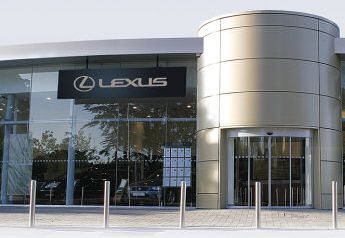
A lot has changed since the release of our business plan. Back then, the Clear Fund was an idea; we had a broad sketch of what we expected to do and what we expected it to cost, and we didn’t yet have funding. Now, the Clear Fund is a project with an approved budget and a concrete plan, and we just sent out grant applications. Seems like a good time for an update. Here’s what’s changed:
Our Board of Directors
The Board of Directors had its first full-attendance meeting on June 22. The current Directors are:
Bob Elliott – charter member of GiveWell; third-most devoted charter member behind me and Elie; co-founder of the national nonprofit Global Justice (not eligible for a Clear Fund grant); author of more than one post on this blog.
Virginia Zink – major Clear Fund donor; extremely passionate about our project; background in sales and marketing (desperately needed, as you can tell from the way I write).
Greg Jensen – major Clear Fund donor; co-CIO of the hedge fund where I used to work; my former boss.
Tim Ogden – Chief Knowledge Officer of Geneva Global; blogs Beyond Philanthropy, the only blog I know of exploring how to help people (although the new Google Blog is also promising); may become a competitor in the future (I certainly hope so), so is recused from certain discussions and votes.
Lucy Bernholz – author of Creating Philanthropic Capital Markets; founder of Blueprint Research & Design; you probably know her from Philanthropy 2173.
Holden Karnofsky – former Chicago Bears defensive end; holds NFL single-season sack record.
As a quick aside, we don’t want more than one compensated employee serving on the Board, and I got the nod over Elie. Elie is still slated to work for the Clear Fund full-time starting August 1.
In our meeting, we approved the official set of causes we’re exploring in 2007, and the timeline and budget for our project (see below). I’m currently waiting for some computer-related nonsense, but will soon post the audio recording of our meeting along with all the written materials that accompanied it.
Our causes
After collecting and discussing a breakdown of how many potential applicants do different sorts of activities, we have decided to do fewer – and broader – causes than our original business plan indicates. We have also clarified our descriptions of them to make it as clear as possible what sorts of organizations do and do not qualify. This page now gives the full lowdown on who is eligible; briefly, our five causes are
- Help people in Africa avoid death and extreme debilitation.
- Help people in Africa become economically self-supporting.
- Improve early childhood development for economically disadvantaged, but not special-needs, children in New York City.
- Improve academic opportunities for economically disadvantaged, but not special-needs, K-12 children in New York City.
- Help disadvantaged adults in New York City become economically self-supporting. “Adults” in this case does not include the elderly, and organizations in this cause must include (though not necessarily focus exclusively on) direct help with finding permanent employment.
Our process and timeline
There are 25-100 eligible (large, relevant, interested) organizations within each cause, and we can’t practically do thorough due diligence on all of them. So we’re conducting our grant application process in two rounds; in round one, we’re asking charities to pick one program that is already well documented and evaluated and send us what they have on it – that’s a time-saving way of seeing which charities are going to be able to demonstrate their effectiveness, without worrying yet about which ones are the most effective. (And based on our experiences last year, we expect that just this criterion – asking that they be able to demonstrate effectiveness – will easily narrow the field.) We’ll use this first-round application to pick about ten charities within each cause; we’ll investigate those more thoroughly, and write up full reviews on about five per cause, giving out one $25,000 grant per cause.
We are aiming to declare the grant winners and have all our reviews up on our website by Thanksgiving – when the media’s thoughts, I predict, will turn to giving.
You can see more on our process and timeline here, and you can see all of the materials that were sent to applicants, including all five first-round applications and a complete run-down of our process, here. It’s a bit dry if you’re not an applicant, but the reason this is such good news is that we now know how many applicants we’re looking at, how many causes we’re doing, and about how much work it’s going to take, and we’re on schedule. Getting to that point took a lot of work, but it’s a much better place to be than where we were in March, with nothing but speculation about how many applicants we’d get and whether Elie and I could handle the load.
Our budget and fundraising
When I post the materials from our Board meeting, they will include the full approved budget. In the meantime, the key points are that (a) based on survey responses, we think that $25,000 per cause will get us a lot of applicants and get us the information we need; (b) once you add in salaries, website costs, and other stuff, we’re looking at a budget in the $240,000 range for 2007; (c) our commitments to donate total $253,000 at this point. That’s obviously fantastic news; it means that to the extent we are fundraising, we can focus on building a donor network for 2008, but more importantly, it means we don’t have to spend all our time fundraising. At this point we can treat our time as being more valuable than money, which is key because we need all the time we have.
So, bear hugs for all the people who stepped up and committed to support us. Building a useful donor resource by December 2007 is absolutely crucial to our chances of getting attention, getting off the ground, and starting to change the way people across the world think about giving. It’s because of your responsiveness and generosity that this is now a feasible goal.
In sum
The parts of our plan that have always seemed most uncertain and out of our control to me (fundraising, setting our scope) are largely behind us, and we’re still on schedule and within our budget. Now it’s a matter of whether Elie and I can communicate well with applicants, make good assessments, write good reviews, and, of course, work our tails off. If we can do that, we can create something that’s never existed before – a website where donors can see (and discuss) every aspect of one of the most difficult and important decisions a privileged person makes: where to give. That, to me, is where the road to solving our biggest problems in a truly collaborative, intelligent way begins.
What’s next
As we wait for grant applications, we’ll be working on:
- Research. The goal is to learn as much as I possibly can about our five causes, to gain better context for evaluating the apps when they come in. So far, I’ve been shocked at how hard it is to find discussions of things like what the most effective way to fight malaria is, or what is known (even guessed) about improving academic opportunity. If I want to learn about early Irish historical tales, or every answer ever to “Is the mind separate from the body?”, there are people I can talk to, anthologies I can read, courses I can take, whole fields to explore. Figuring how to help the people who need the most help has a literature that (as far as I can tell) is relatively small and scattered all over the place. It’s odd. But rest assured, I’ll share what I find; please share what you have.
- Recruiting. If you are interested in a demanding, even punishing volunteer assignment that won’t even get you the chance to see cute children, shoot me an email. In August or September, as Round Two of our application process begins, we will start giving out volunteer assignments. We don’t have the whole process outlined yet, but my rough picture is that a volunteer will be sent a charity’s application materials and be charged with writing an intelligent, understandable review that hits the highlights while linking to every detail. Volunteers who do this poorly or simply don’t spend enough time on it will quickly stop volunteering. Volunteers who turn out to be passionate about this work (and good at it) will save us a ton of time and will take on expanding roles.
Unlike some nonprofits, we don’t offer useless volunteer jobs as a way of getting people to feel good and like us; we are looking for people who can become important to the project. This is ultimately how we’re going to build our staff, both part- and full-time, if the project expands (because people, like time and goodness, can’t simply be bought). If you don’t have the time or the passion and you’d rather just donate a ton of money to us, I understand.
- Publicity. This is a bit down the line, but we want to make some serious noise come December, so let me know if you have any ideas. Got a friend who works for the Times, or even Deadspin? I’d love to have a talk with them.
- Website construction. The sketch I have in my head involves fusing Drupal and vBulletin to create a site where every single page has its own full-featured discussion board attached. I’d love to speak to people who know those two apps inside and out, so let me know if you know any.
- Building the world’s soon-to-be greatest donor network of all time. We’re working on finding people who are both capable of and excited about paying to make the world a better place. Or people who know those people. When we have an awesome proof of concept in December, we need to make sure we have someone to show it to. (If you want to help with this, let me know because there is almost definitely something you can do.)
Whew!
That’s the story. We’ve already publicly posted our application materials, full process description, and eligibility criteria, as well as created a public forum where you’ll hopefully be able to see what our applicants are saying to (and about) us. Still to come (hopefully within the week) are all the materials from our Board meeting, including the minutes and the audio recording as well as our projected budget. We want you to be able to see into any corner of what we’re doing that you care to explore. And if you have any questions, comments, or suggestions – don’t hold back.

 An objection to our project that I get occasionally goes something like this: sure, it would be great if people really understood the complexities involved in helping people and gave accordingly – but aren’t we worried that revealing these complexities will just make them want to give less? What happens when people learn that charity in Africa is more complicated than “5 cents saves a life,” that charity in the US is more complicated than “Check it out, an adorable child,” and finding a low
An objection to our project that I get occasionally goes something like this: sure, it would be great if people really understood the complexities involved in helping people and gave accordingly – but aren’t we worried that revealing these complexities will just make them want to give less? What happens when people learn that charity in Africa is more complicated than “5 cents saves a life,” that charity in the US is more complicated than “Check it out, an adorable child,” and finding a low  Pie bigger: some donors are too analytical for traditional fundraising to work on them; the only way they can have confidence in something is if they have real information. As I argued
Pie bigger: some donors are too analytical for traditional fundraising to work on them; the only way they can have confidence in something is if they have real information. As I argued  Pie smaller: some donors honestly believe that the charities they donate to – unlike every organization in the world – have never made a debatable choice or (heavens forbid) a mistake. As soon as they get wind, it’s less charity and bigger houses for them.
Pie smaller: some donors honestly believe that the charities they donate to – unlike every organization in the world – have never made a debatable choice or (heavens forbid) a mistake. As soon as they get wind, it’s less charity and bigger houses for them. Secondly, it doesn’t just matter how big the pie is, it matters what’s in it. The donors we’re in danger of “pushing out” (again, I find it hard to believe they will even be aware of us) are the least intelligent and/or least engaged ones. The donations we’re in danger of eliminating are the ones that are floating about almost at random, to whatever charity says “We’re perfect” first. Meanwhile, the donors we hope to bring in are the ones who care enough to want to put in some extra time and figure out how to do as much good as possible. They’re the ones who can contribute to the dialogue, and they’ll probably be contributing more money as well. Contrary to what you may have heard, there are worse things than a smaller pie. Like a half-baked one.
Secondly, it doesn’t just matter how big the pie is, it matters what’s in it. The donors we’re in danger of “pushing out” (again, I find it hard to believe they will even be aware of us) are the least intelligent and/or least engaged ones. The donations we’re in danger of eliminating are the ones that are floating about almost at random, to whatever charity says “We’re perfect” first. Meanwhile, the donors we hope to bring in are the ones who care enough to want to put in some extra time and figure out how to do as much good as possible. They’re the ones who can contribute to the dialogue, and they’ll probably be contributing more money as well. Contrary to what you may have heard, there are worse things than a smaller pie. Like a half-baked one. Generally, I’m less interested in getting people to give more than I am in getting them to give well – I think of healing the world as a project that needs a better, smarter budget more than it needs a bigger one.
Generally, I’m less interested in getting people to give more than I am in getting them to give well – I think of healing the world as a project that needs a better, smarter budget more than it needs a bigger one. I don’t believe I’m alone here. Not when so many of the people I talk to about charity in general say they don’t have any idea what their donations are paying for, and even explicitly cite misleading crap like what I’ve linked to above as a turn-off. Not when many of our donors tell me that their donation to The Clear Fund is in a completely different ballpark from any other gift they’ve ever made. There are people out there who would give more if they really understood what it was for; that’s money waiting to be raised.
I don’t believe I’m alone here. Not when so many of the people I talk to about charity in general say they don’t have any idea what their donations are paying for, and even explicitly cite misleading crap like what I’ve linked to above as a turn-off. Not when many of our donors tell me that their donation to The Clear Fund is in a completely different ballpark from any other gift they’ve ever made. There are people out there who would give more if they really understood what it was for; that’s money waiting to be raised.
 Conflict doesn’t just happen between armies; it happens between generals, precisely because those generals are so determined to win. Competition doesn’t just happen between two football teams; it happens between the players on the team, because letting Rex Grossman and Kyle Orton compete to play quarterback is what’s best for the Chicago Bears. Conflict and competition aren’t just things I want to see in massive marketplaces and nations; I also want to see them within families, companies, and communities. The people I challenge and criticize most are the ones who are most on my side, because that’s how we’re going to get our best shot at accomplishing our collective goal. If you think Elie and I are nice to each other, you haven’t met either of us.
Conflict doesn’t just happen between armies; it happens between generals, precisely because those generals are so determined to win. Competition doesn’t just happen between two football teams; it happens between the players on the team, because letting Rex Grossman and Kyle Orton compete to play quarterback is what’s best for the Chicago Bears. Conflict and competition aren’t just things I want to see in massive marketplaces and nations; I also want to see them within families, companies, and communities. The people I challenge and criticize most are the ones who are most on my side, because that’s how we’re going to get our best shot at accomplishing our collective goal. If you think Elie and I are nice to each other, you haven’t met either of us.